
Salty Sam’s Fun Blog for Children
Number 297
Avalanches
Hello Everyone

Last week l told you about rain. How necessary it is, but, occasionally, how dangerous it can be too.
lt put in my mind an idea to tell you on this week’s blog post about another dangerous weather phenomenon, blizzards.
We don’t often get blizzards in Britain, but some parts of the world often have them in the winter. Heavy snowfall can cause problems, just like heavy rain, but of course it is much colder. Both people and wildlife will be affected.
ln 1947, there was such heavy snowfall that the British government really worried that people would starve to death. Lots of people were trapped in their houses in the remoter parts of the country and couldn’t get to the shops to buy food. The trouble was that everyone was still affected by the food rationing that had started in the Second World War and they didn’t have huge food stocks in their cupboards.
The snow that winter was 10 feet deep in places. Miners could not get to work and London was running out of coal to stoke the fires that kept people warm in their homes.
Another bad winter came between 1962 and 1963. On the television news it was dubbed ‘The Big Freeze’. Temperatures got down to minus twenty degrees Celsius and sadly 30 people died because of the bad weather.
There were 12 weeks of hard frost which froze water pipes deep underground and there were huge snow banks many feet thick.
ln some places, the sea froze to nearly a mile out from the coast.
You may be old enough to remember the snow that came at the end of February 2018. The weather front was dubbed the ‘Beast from the East’. Some children did not go to school for days.
Some people had snow drifts up to nearly 4 metres high.
Snow storms can carry destructive lightning and strong freezing winds.
ln regions where heavy snowfall is common, the melting snow in spring can be a welcome sight. The melting ice and snow trickles into streams and rivers and hopefully washes away gradually.
But sometimes snow builds up into such huge banks it can collapse under its own weight. These collapses are called avalanches.
They most commonly occur on slopes at an angle of about 30 – 45 degrees. A sheet of dense snow can slip from a weaker layer beneath it. lt shifts down the mountain side collecting up to 100 times more snow as it falls.
lf anyone gets trapped in this snow, it is very dangerous because the weight of the snow is so heavy pressing down on them. The best way to find people trapped under the snow is by using dogs – usually St Bernard dogs who are trained for the job. They got their name from working with monks from the monastery of St Bernard. They are better than any gadget devised by man using radar or infra-red detection methods.
Humans can smell one part in a million and dogs have a sense of smell that is 10,000 more sensitive than humans.
Sometimes skiers dislodge snow as they ski down mountains. Usually, when you go on a skiing holiday, safe ski runs are marked out for you to use. But some more experienced skiers want to go into other places. This is called going off-piste.
Going off-piste (away from the designated ski runs) can be dangerous.
lf an avalanche occurs, skiers have to try and out-ski the avalanche or even ‘swim for it’ through the falling clouds of snow.
Switzerland has the highest number of avalanches.
They can be triggered off by loud or even soft noises which cause vibration.
When the avalanches occur they can block roads and railway lines and bury whole villages. This has happened many times over. Avalanches are known as the white death.
60,000 soldiers were killed in the Alps on manoeuvres in the First World War; 1,000 of them in just one day.
The people who live in mountainous regions where avalanches can occur try to help themselves by planting barriers of trees around their towns and building buildings that can withstand a heavy fall of snow.
But perhaps the most useful method of protection is to send loud noises out on purpose from time to time to dislodge the build up of snow gradually so that it never has a chance to grow into huge banks on the mountain slopes in the first place.
The ski runs have fences built across parts of them in strategic places to catch the snow if it starts to fall down the slopes. But the snow is regularly tested to see what state it is in. A small section is selected and is whacked several times to see how firm it is.
lf you are going on a skiing holiday this winter, don’t worry about avalanches, they rarely happen and it is unlikely that you will ever see one, but they are interesting to watch on film.
Bye bye everyone – don’t forget to subscribe to my blog!
lf you like my blog, please support it by telling all your friends and followers about it.
Thank you!
And see you again next Fun Friday!
Love and kisses
Salty Sam

www.christina-sinclair.com


Bill and Bob’s Joke of the Week![]()
![]()
Bill: Knock, knock!
Bob: Who’s there?
Bill: Snow
Bob: Snow who?
Bill: Snow good asking me. l don’t know!

Salty Sam © Christina Sinclair 2015
Unauthorized use and/or duplication of material from this blog without express and written permission from this blog’s author and owner is strictly prohibited.
Links may be used to www.christina-sinclair.com

Picture Gallery
 The beginning of an avalanche is the slipping of a layer of snow
The beginning of an avalanche is the slipping of a layer of snow
 The snow in an avalanche looks like a cloud
The snow in an avalanche looks like a cloud
 Or a mist
Or a mist


 THE SALTY SAM NEWS DESK
THE SALTY SAM NEWS DESK

This week Emily went to her friend’s house to play.
Her friend, Amanda, has a baby brother who is crawling around.
Emily and Amanda were playing with some toys on the floor and then went off to do something else.
Amanda’s mother was quite cross and told Amanda that she had told her before not to do this.
Babies that crawl around can get into trouble if they pick something up that they shouldn’t. They very often poke their little fingers into things or put things into their mouth. Babies often explore the world by putting things into their mouth.
Tiny toys or things out of a sewing box can become a choking hazard.
Medicines and vitamin pills and any household cleaners or washing detergents can be poisons to a baby, if they get hold of them.
All electric sockets should have child-proof covers on them.
Amanda was upset that she had been told off again. Her mother told her that she had to be a responsible, older sister because she was old enough to understand what had to be done.

The next day Emily and Amanda went to play at Auntie Alice’s house. They told Auntie Alice what had happened the day before and Auntie Alice made Amanda a little box to keep her tiny toys in.
She said Amanda could put it away up on a shelf and her brother shouldn’t be able to get to it.
This made Amanda very happy.
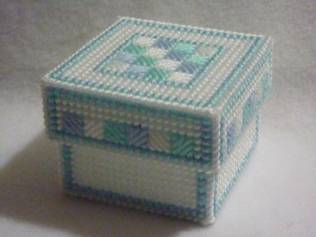

*********************
TO ADVERTISE ON THIS BLOG
PLEASE CONTACT:
christina.sinclair.ads@aol.co.uk
*********************


Quick Quiz
Draw a grid four squares across by eight squares down.
Now write words across the squares using these clues to help you and find a word reading downwards at the end of the words you have written.
- Something you blow from your lips
- Two pieces of fabric that have been put together with thread
- To go it alone
- What the wind does
- Divided into two
- A special celebration or entertainment
- Something to play soccer with
- The birds you find in the farmyard or on a river




lt’s the Weekend!

HOW TO MAKE A TlNY TOY STORAGE BOX
So this is the storage box that Amanda is keeping her tiny toys in.
Keeping them all together will mean that she will always be able to find them when she wants to play with them.
TINY TOYS STORAGE BOX
You will need 2 sheets of 7 mesh 10.5 by 13.5 inches/26.7 by 34.3cm
Some lengths of yarn for sewing in three colours
Cut the following panels:-
Outer lid top 23 x 23 holes 1 panel
Outer lid sides 23 x 8 holes 4 panels
Inner lid top 21 x 21 holes 1 panel
Inner lid sides 21 x 7 holes 4 panels
Outer base bottom 21 x 21 holes 1 panel
Outer base sides 21 x 15 holes 4 panels
Inner base bottom 19 x 19 holes 1 panel
Inner base sides 19 x 14 holes 4 panels
TO MAKE UP
- Sew the sides to the top on the inner skin of the lid but do not sew up the corners – using white yarn will make the stitching less noticeable than a darker colour.
- Sew the sides to the bottom on the inner skin of the base but do not sew up the corners – using white yarn will make the stitching less noticeable than a darker colour.
- Put these two pieces to one side and work canvas work stitches onto the other panels using any colours you like
Embroider the outer skin of the box using the photograph as a guide – the coloured borders are worked in cross stitch in blue and green in an alternate fashion

Lid side
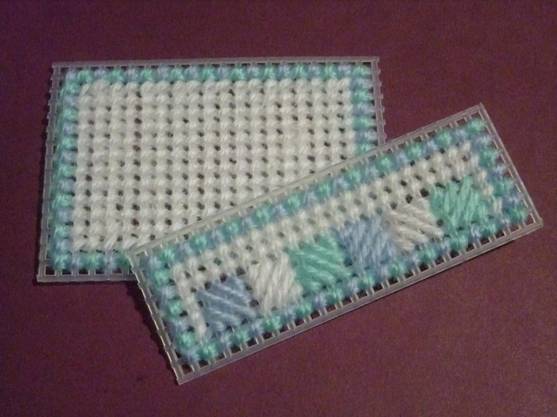
Box side and lid side

Lid top
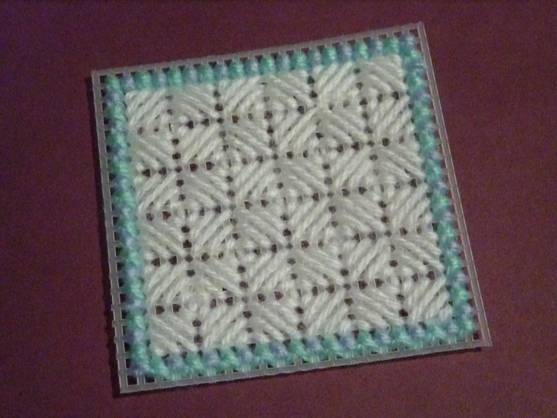
Box base
TO MAKE UP
- Sew the sides of the lid to the top of the lid then sew up the corners
- Sew the sides of the storage box to the base then sew up the corners
- Push the inner skins into place and sew around the rims of the lid and box – you will only sew into one layer of canvas for one hole at each end of the sides
- You can put a square of felt into the base of the box to make it look plush
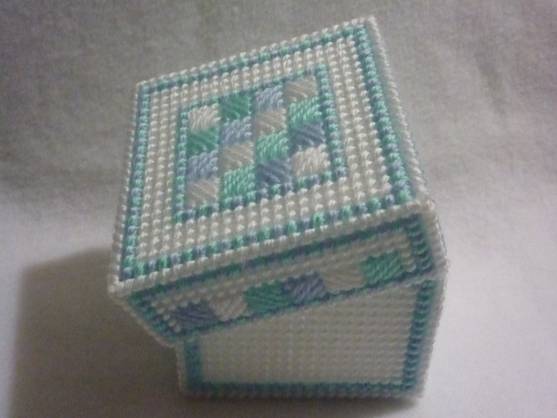
Please note that the material on this blog is for personal use and for use in classrooms only.
It is a copyright infringement and, therefore, illegal under international law to sell items made with these patterns.
Use of the toys and projects is at your own risk.
©Christina Sinclair Designs 2015


Quick Quiz Answers
- kiss
- sewn
- solo
- blow
- half
- gala
- ball
- fowl
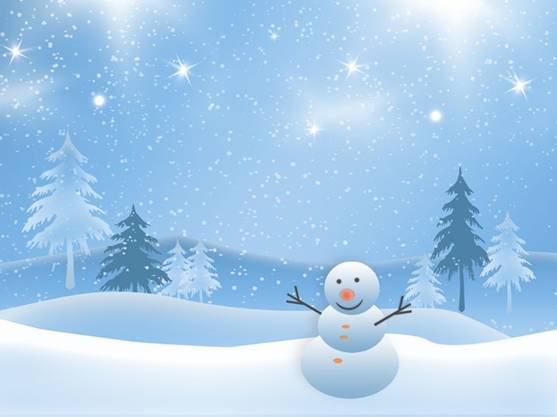
snowfall
Have a look at these pictures on my Pinboard
to see how beautiful snow can be!
https://www.pinterest.co.uk/TheSaltySamBlog/winter/



I think this is a real great blog post. Really thank you! Really Great.
Thanks!